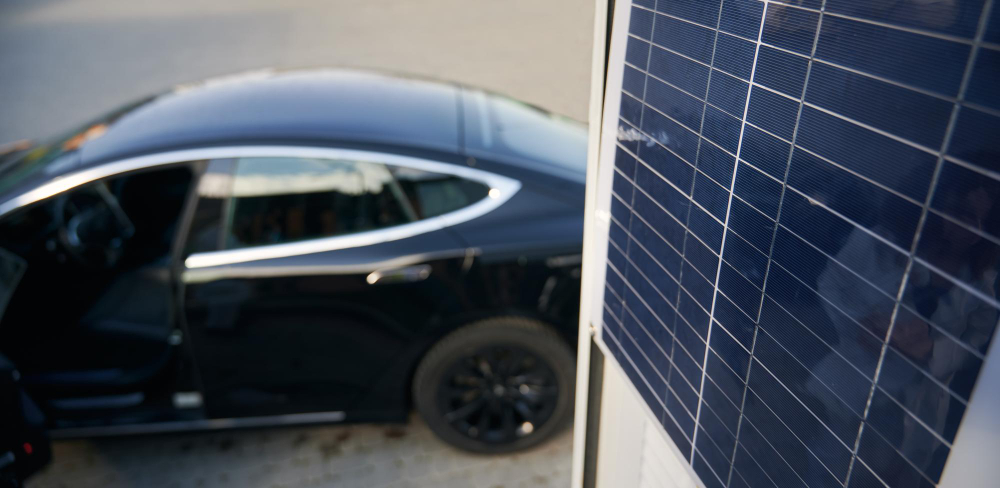Solar Panel Setups Meets Electric Vehicles: A Philippine Green Combo
The Philippines is on the cusp of a transportation transformation. With its abundant sunlight and growing awareness of climate change, the country is poised to use solar panel setups and electric vehicles as key components of a more sustainable future.
Throughout this article, we will dive into the potential of solar energy to charge electric vehicles in the Philippines. We will examine the current landscape, government initiatives, challenges, opportunities, and real-world examples.
Embracing Sustainable Transportation
The Rise of Electric Vehicles in the Philippines
The electric vehicle (EV) market in the Philippines is growing, especially for electric motorcycles and tricycles, which are affordable and ideal for urban use. Sales of passenger EVs like the Nissan LEAF and BYD are also increasing among eco-conscious consumers and businesses. Rising gasoline prices are driving interest in EVs, and government incentives, such as lower registration fees and tax breaks, are making them more accessible. However, concerns about range and charging infrastructure remain obstacles to wider adoption, which solar-powered charging could help resolve.
The Untapped Potential of Solar Energy
The Philippines benefits from abundant sunshine, averaging 4-5 kilowatt-hours of solar energy per square meter daily. This creates a significant opportunity to expand renewable energy use and decrease reliance on fossil fuels. While large solar farms like the Calatagan Solar Farm in Batangas are making progress, integrating solar power into homes and businesses can also have a major impact. Various solar panels, such as monocrystalline and polycrystalline, are effective in the local climate, each with different efficiencies and costs. To address the variability in solar energy production, using batteries for storage is essential for ensuring reliable charging for electric vehicles.
The Synergy: Solar-Powered Charging for EVs
How Solar Panels Can Charge Electric Vehicles
Solar panels can turn sunlight into electricity to charge electric vehicles. The system includes solar panels, an inverter, batteries (optional), and an EV charger. The inverter changes the electricity from DC to AC. The EV charger determines how fast the EV battery charges. There are different levels of chargers. With a grid-tied system, any extra solar energy can be sent back to the power grid. With an off-grid system, you’ll rely solely on solar energy and battery storage.
Advantages of Combining Solar and EVs
Combining solar panels and EVs has many benefits. It helps the environment by reducing pollution and fighting climate change. It also saves money on electricity and fuel. When EV owners use solar power, they depend less on the electricity grid and fuels from other countries. This makes the country more energy independent and secure. A life cycle cost analysis often shows that solar-powered EVs are a good investment in the long run.
Government Support and Policy Landscape
Overview of Relevant Government Initiatives
The Philippine government is supporting EVs and renewable energy. The Electric Vehicle Industry Development Act (EVIDA) aims to promote EVs by offering incentives such as tax breaks and lower registration fees. The net metering program allows people to sell extra solar energy back to the power grid. The Department of Energy (DOE) and the Board of Investments (BOI) also have programs to support solar energy and EV charging. All these initiatives make it easier to use solar power and EVs together.
Navigating Regulatory Frameworks
Installing solar panels and EV charging stations requires following certain rules. You need to get permits and follow building codes. EV charging stations must also meet safety standards. It can be complicated, but working with qualified installers can help.
Challenges and Opportunities
Overcoming Barriers to Adoption
There are challenges to overcome. The cost of solar panels and EVs can be high. It’s also hard to find financing options. There aren’t enough charging stations, and the power grid may not be ready for a lot of EVs. To solve these problems, we need new ways to finance solar and EVs. We also need to build more charging stations and improve the power grid. It’s important to make people more aware of the benefits of EVs and solar energy. Also, high import tariffs on EVs and solar panels make them more expensive.
Exploring Future Possibilities
The future looks promising. Batteries are getting better, allowing EVs to travel farther on a single charge. Solar panels are also becoming more efficient and affordable. There is potential for large solar-powered charging networks in cities and rural areas. Vehicle-to-grid (V2G) technology could allow EVs to send electricity back to the power grid. The solar and EV industries can create many jobs.
Real-World Examples and Case Studies
Showcasing Successful Implementations
Some homeowners and businesses in the Philippines are already using solar power to charge their EVs. These examples show that it’s possible and beneficial. Some homeowners have solar panels on their roofs and use the electricity to charge their EVs. This saves them money on their electricity bills. Some businesses are using solar-powered EV fleets to save money and reduce pollution. There are even some solar-powered EV charging stations in the Philippines.
Lessons Learned and Best Practices
People who have already adopted solar-powered EVs have learned valuable lessons. Choosing the right solar panels and EV chargers is important. It’s also important to install and maintain the system properly. Charging EVs during the day when the sun is shining can save even more money.
Envisioning a Sustainable Transportation Ecosystem
The future of transportation in the Philippines could involve mostly solar-powered EVs. This would reduce pollution, make the air cleaner, improve energy security, and create jobs. We need everyone to work together to make this happen.
Key Takeaway
Solar panel setups and electric vehicles demand a collective effort from individuals, businesses, and the government to invest in and support this transition towards a cleaner transportation system. Hence, the Philippines’ sunny climate presents a promising opportunity for a greener future, where solar energy and electric vehicles pave the way forward.














Post Comment